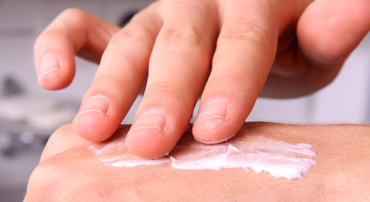Hydrocolloid Technology
Scapa Soft-Pro® Hydrocolloid technology is a type of medical adhesive that contains gel-forming agents, ideal for acute and chronic wounds, ostomy and med device fixation.
learn moreWe are the strategic healthcare and consumer medical device outsource partner you can trust. We collaborate with top global medtech companies to design, develop and manufacture innovative skin-friendly fixation and skin care topical solutions for advanced wound care, consumer wellness and medical device fixation applications. Our competencies include:
.jpg?sfvrsn=b5ae7ed7_2)
Scapa Soft-Pro® Hydrocolloid technology is a type of medical adhesive that contains gel-forming agents, ideal for acute and chronic wounds, ostomy and med device fixation.
learn more
Custom topical wound care solutions and consumer skin care products with the optimal dosage levels of active ingredients and raw materials to achieve premium results.
Learn more
We provide Gamma irradiation services for a variety of medical devices, pharmaceutical and consumable products of different densities, dose requirements and material composition.
learn more
We understand the complexities of wound and ostomy management and all stages of the healing process. Our broad range of technologies and capabilities allow us to deliver unique wound care, ostomy and skin topical solutions to enhance people's.quality of life.
learn more
Today's consumers are looking for products that allow them to address their unique personal care needs from the comfort of their own home. We partner with leading companies to create innovative solutions to address consumers' unmet needs.
learn moreChronic diseases and new lifestyles have led to the adoption of wearable devices to manage overall health with real-time data. Our expertise in medical-grade skin adhesives and advanced materials allow us to develop custom fixation solutions to meet specific end user requirements.
learn moreThe wearable adhesives market is growing rapidly, driven by provider and consumer demand as well as advancements in medical devices for personalized care such as continuous glucose monitoring and point-of-care diagnostics. Wearable adhesives are used to attach medical devices to the body for continuous and long-term durations; the ability to properly adhere to the skin is a key factor for an effectively functioning device. The selection and development of this adhesive is challenging and needs careful consideration due to the complex and varying nature of human skin and the characteristics of the specific wearable device, such as its size, weight, flexibility, and application purpose. While proper screening and testing to choose the optimal wearable adhesive may seem work time and labor intensive, it can ultimately save time and money by reducing risk in the long run. Moving forward with an existing adhesive carrier substrate without careful evidence might lead to failure at the clinical stage because of improper device adhesion.
In order to identify the adhesive that is the best choice for a particular wearable device, Scapa Healthcare first defines the requirements for the device and its adhesive, including:
To save time during development, the screening process of the possible solutions is fundamental. An effective combination of a few in vitro and in vivo tests can drastically accelerate the development cycle. Base characteristics of the adhesive are moisture vapor transmission rate (MVTR), peel, tack and shear. All of those properties can be effectively screened in vitro. Scapa compares adhesive options to one another in terms of tack, peel, and MVTR which will drive informed decisions on the adhesive selection and will facilitate a new selection in the event the first choice of adhesive does not perform as expected in a healthy volunteer study.
The next step is to classify the adhesive prototypes from the highest to the lowest tack, peel, and MVTR. Next, the appropriate carrier will need to be selected using flexibility, durability, weldability, and breathability requirements.
Based on the classification of the adhesive, we conduct a study on healthy volunteers with the wearable device itself (or a surrogate that has similar weight, shape and thickness) at the application site. During human testing, biocompatibility factors such as cytotoxicity, skin irradiation and sensitization are evaluated.
Leave a comment